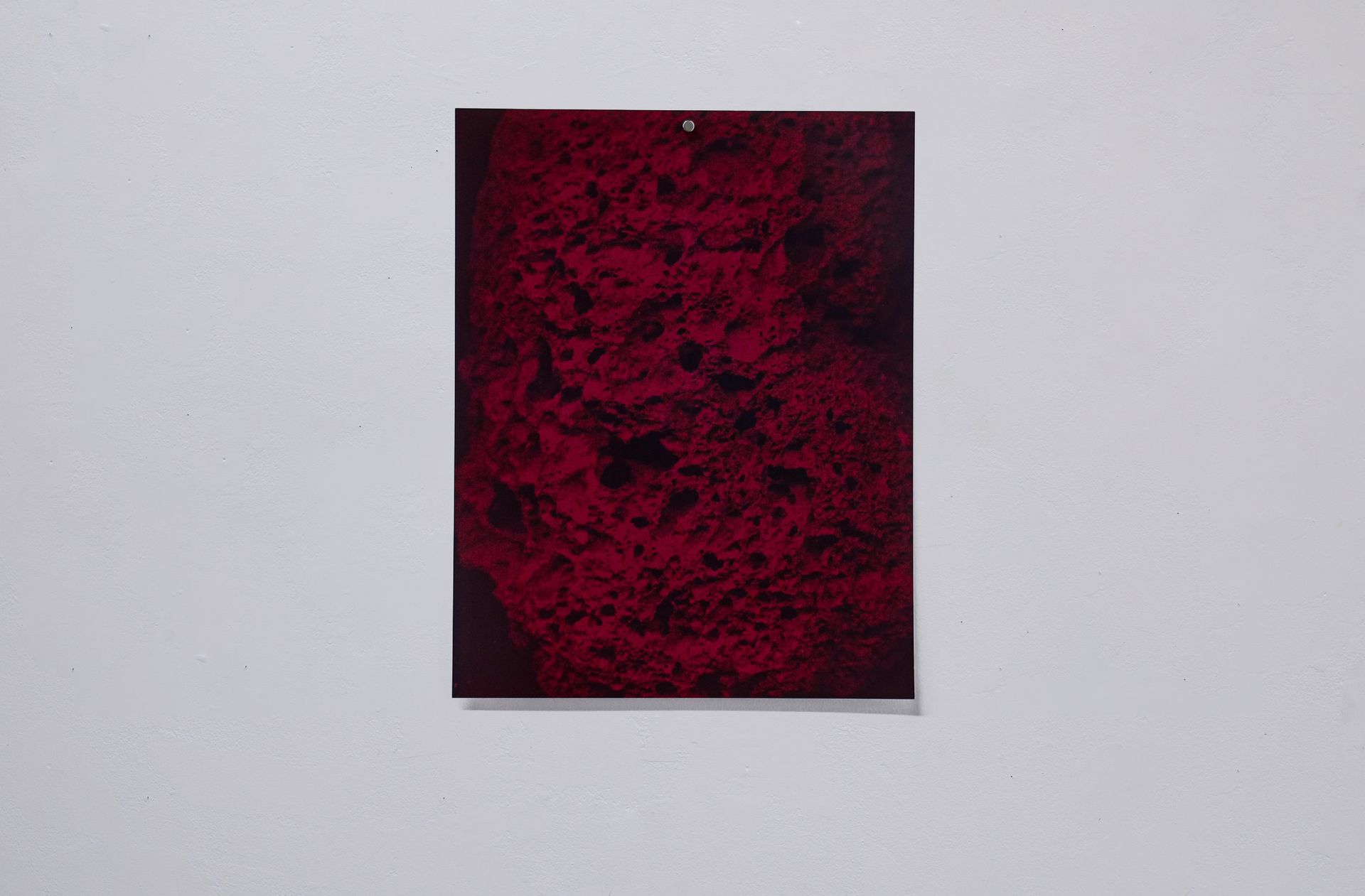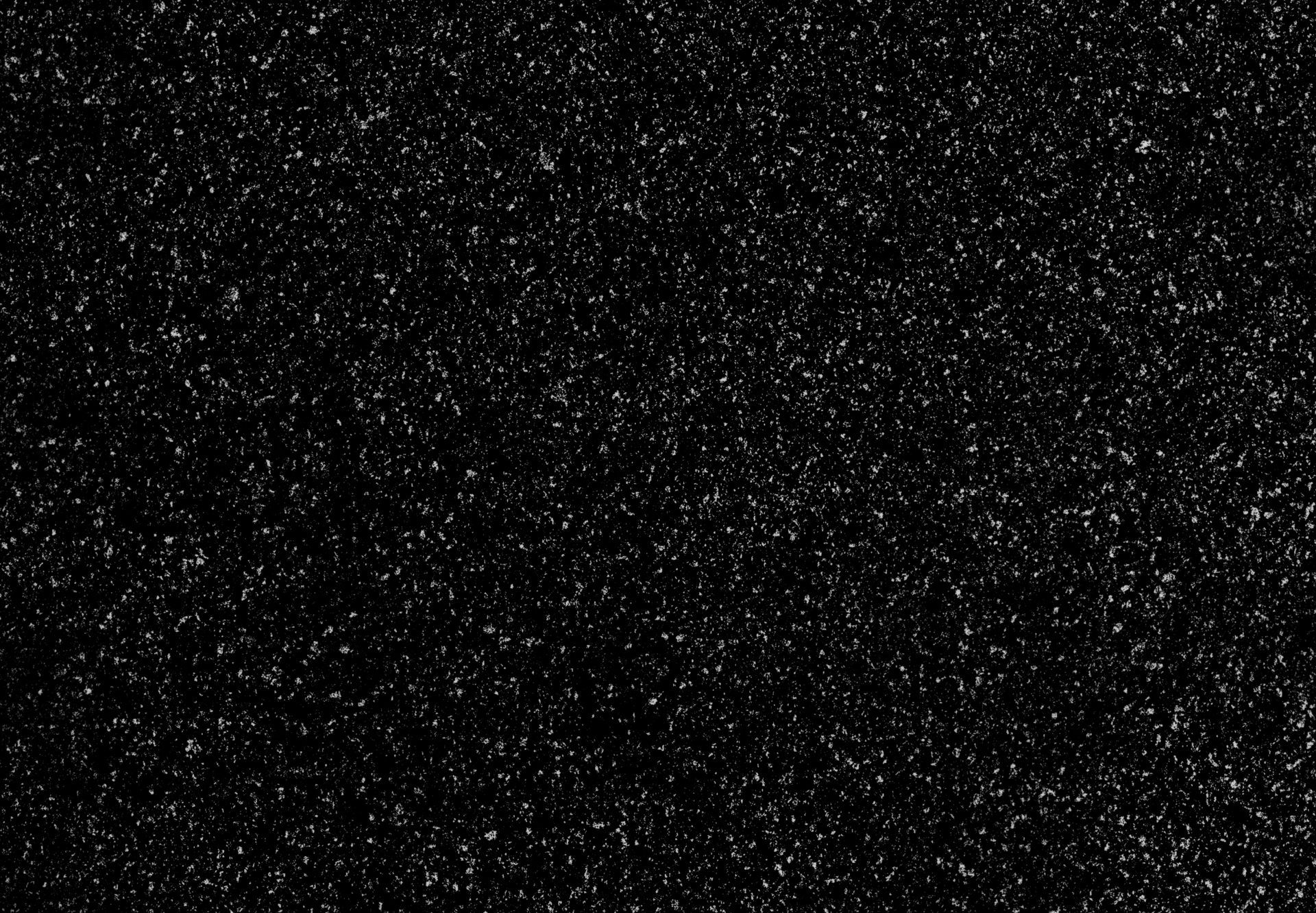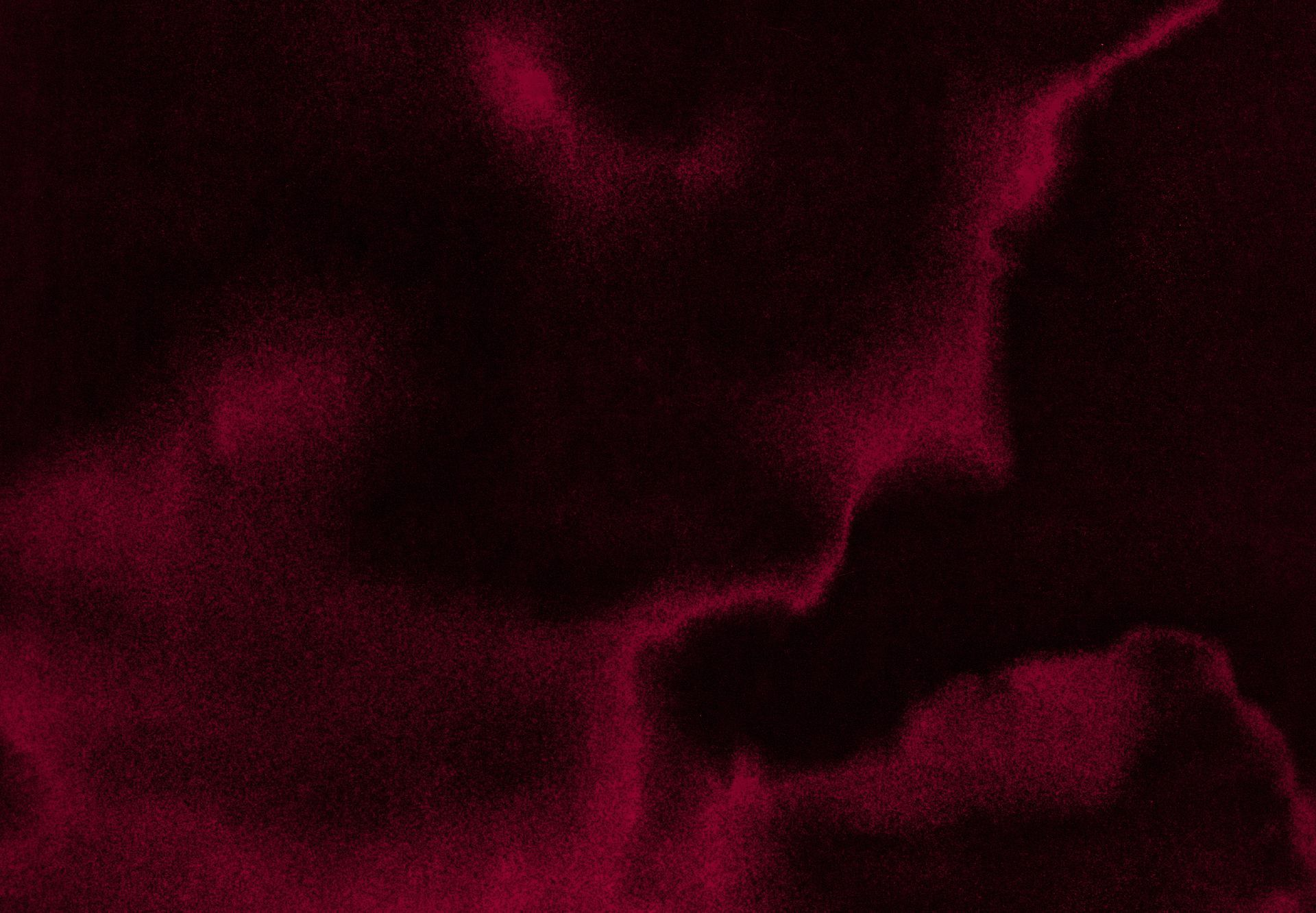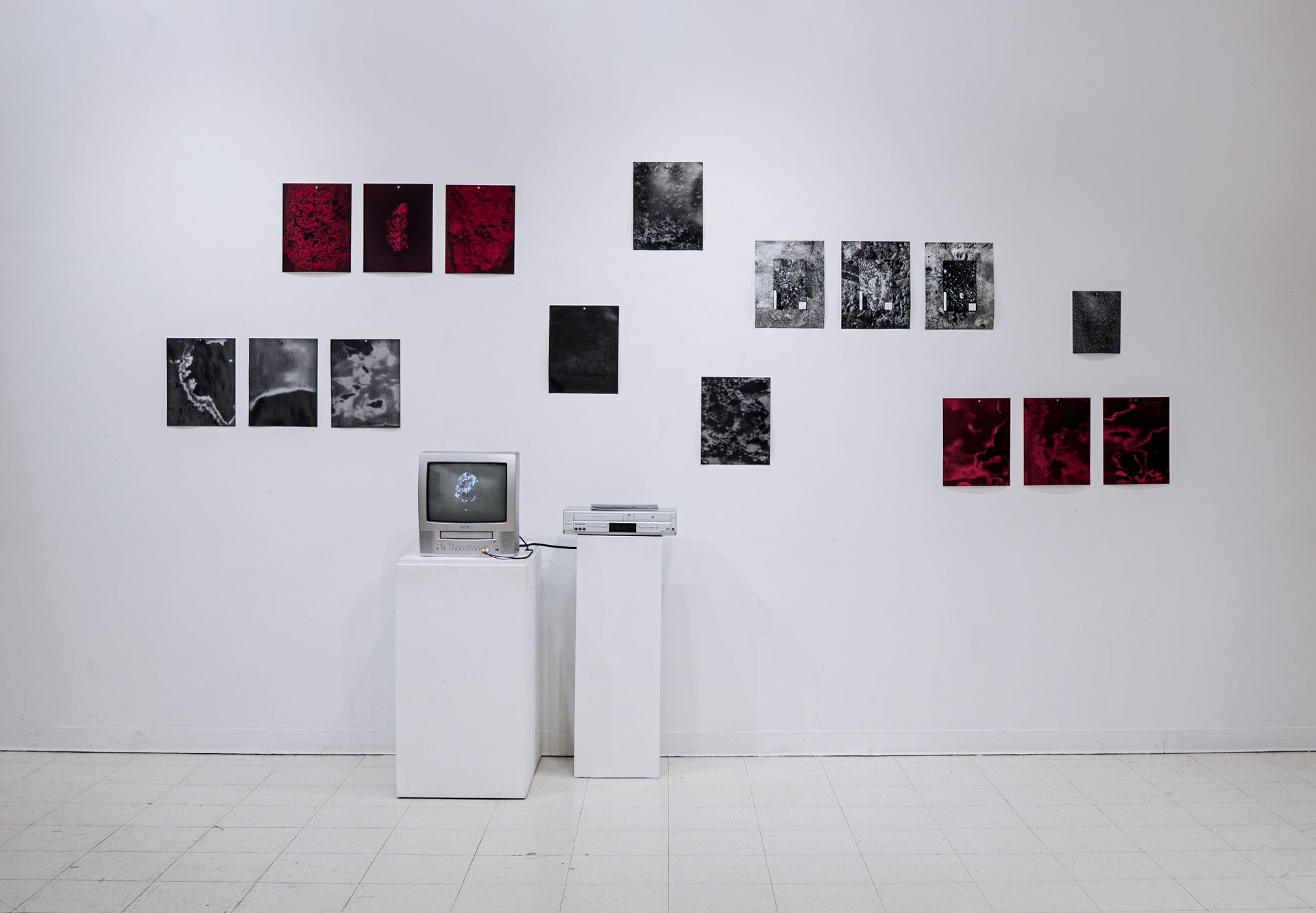
“paroxysms” (2024) is a series of still and moving images depicting aspects of Stromboli, the Italian volcanic island where my great-grandparents lived and farmed before immigrating to Brooklyn in the early 1900s. Stromboli holds a near-mythological allure for me, not only as the floating home of the Greek god Aeolus, the keeper of the winds – but also in its family context, as a fertile and unstable ground for farming and living, a constant torsion of beauty and precarity.
Having never been to the island, I am left with a long series of abstractions to make sense of – narratives passed down by generations of family members; small geological artifacts brought back in suitcases; and image, sound, and video files available in the public domain. For years, a small jar of black volcanic sand and a few stones that my grandmother brought back when she visited Stromboli sat on the ledge above the sink in her kitchen under a stained glass image of the Brooklyn bridge – next to a wooden cross, small troll doll, and a bowl of pine cones.
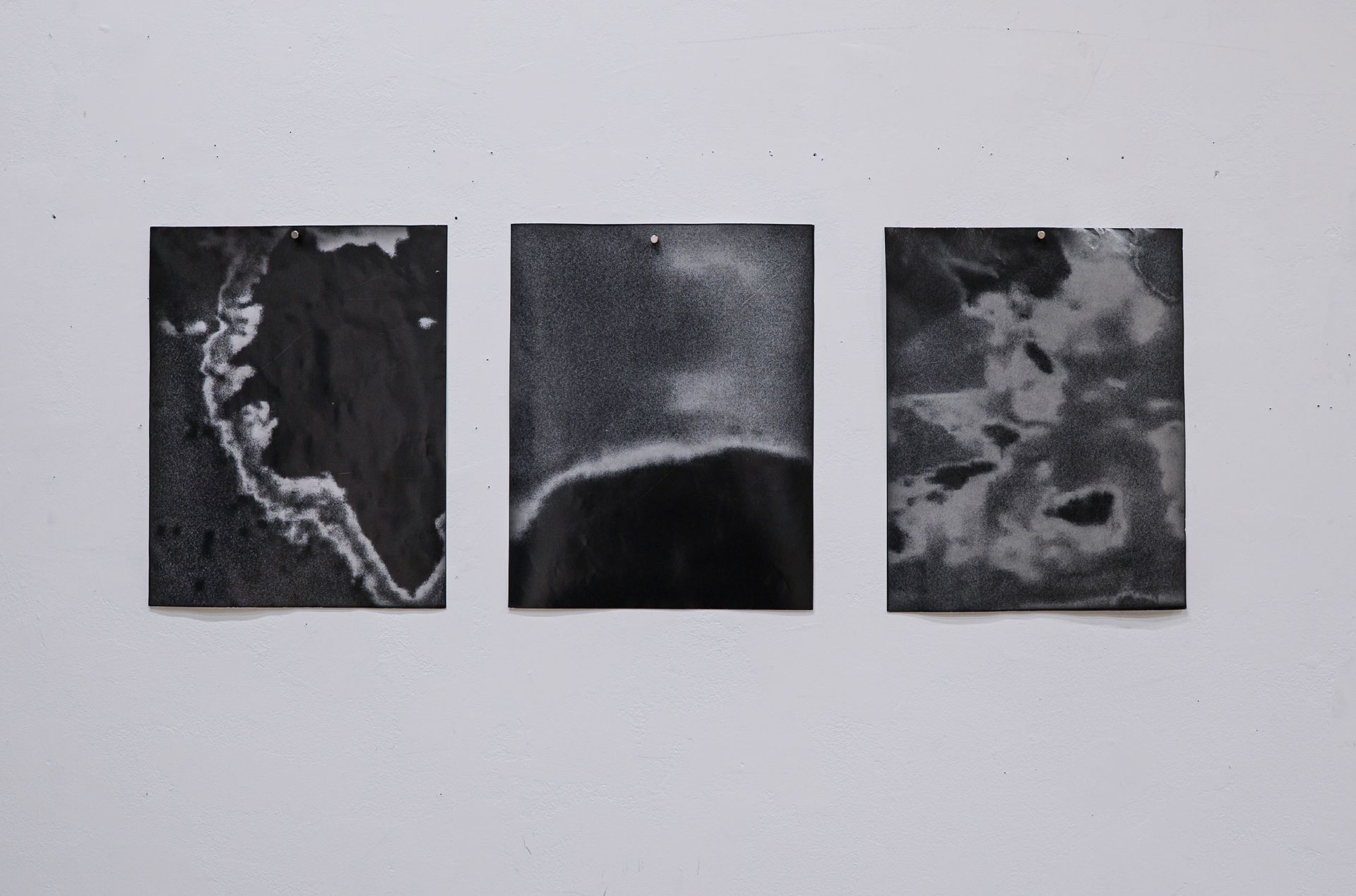
What might an aggregation of analog prints of digital images of natural textures from sources both personally and commercially available (scans of of sand and stone, 360º map images excerpted to show only the ground on various walking trails, webcam videos of eruptions) do to establish a connection to a place that feels both connected to and tremendously distant from the body? How, in an ongoing image system of digital distance-making, might analog processes be helpful in restoring some of the emotionality of natural textures and processes – of visual eruptions?
Moving 2D and 3D scans of geological objects and screenshots of web sources back and forth through mechanisms of digital and analog image manipulation, “paroxysms” is comprised of silver gelatin and chromogenic prints and a rotating video installation re-animated from frames exposed in the darkroom. Newly imbued with or, alternately perhaps, devoid of emotional significance, the images offer a momentary convening in which an effort to get closer to an experience, memory, landscape, or texture, results in abstraction or material flattening – a loss of color and depth, a construct of noise and digital approximation. Bringing those textures back into physical space via analog printing processes fabricates a staged and stilted recollection of a landscape that is at once so viscerally and familially relevant, but that slips away just beyond the images that make up its immediate surface.
